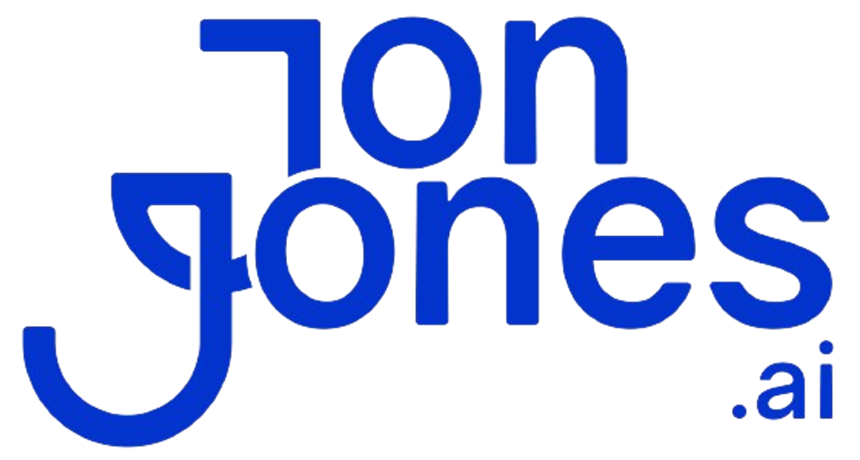Think all leads are the same? You end up sorting through fifty sign-ups just to find one worth chasing.
We dove into the top AI (artificial intelligence) lead-generation tools, like CRM (customer relationship management software), automation platforms, and chatbots (automated chat helpers). We watched random sign-ups turn into real, high-potential conversations.
And we’ll show you how these smart systems spot only your best contacts. So you can spend time where it counts, closing deals.
By the end, you’ll know which platforms turn your sales funnel into a precision machine.
10. ai lead generation software boosts qualified leads

Feeling buried by random sign-ups? We’ve tested the top AI lead gen (lead generation) tools to pull in more qualified leads while you focus on growth.
Here are our three favorites:
-
HubSpot: a CRM (customer relationship management software) that brings form capture, marketing campaigns, sales pipelines, and support tickets into one view. You’ll never wonder who to follow up with, since every lead shows up in a single dashboard.
-
Zapier: an automation (a way to let software handle tasks) platform that links over 3,000 apps. No code needed, you can spin up landing pages, chatbots (automated chat helpers), and lead workflows in minutes.
-
Intercom: a live chat and Fin AI agent (an AI program that sorts chats) combo that filters visitors in real time. Hot leads get routed straight into your nurture stream so you can jump in with a personal touch.
| Platform | Key Features | Integrations |
|---|---|---|
| HubSpot | All-in-one CRM with forms, marketing, sales, support | Google Ads, Mailchimp, Zapier |
| Zapier | Orchestrates 3,000+ apps with custom workflows | CRMs, email tools, landing pages |
| seoClarity | AI SEO analysis and AI content creation | Google Analytics, CMS platforms |
| Intercom | Chatbots with Fin AI agent for lead routing | Slack, Mailchimp, Google Sheets |
| Demio | Live, scheduled, and on-demand webinars (online seminars) | Zapier, email marketing tools |
| Mailchimp | Drip email campaigns with AI templates | Google Ads, Google Sheets, Zapier |
Matching your choice to team size, budget, and growth goals keeps your funnel humming. If you’re a solo marketer, try Carrd (a simple landing page builder) plus Mailchimp, then layer in Zapier automations. Mid-size teams can add Intercom chatbots and Demio webinars for richer capture. Large teams often plug in seoClarity for deep organic insights alongside HubSpot’s end-to-end CRM view.
Key Features of ai lead generation software

AI-Powered Lead Capture and Chatbots
When someone lands on your site, smart forms and bots jump right in. Tools like HubSpot forms turn clicks into contact entries, and Intercom chatbots for lead capture start qualifying chats in seconds. You’ll bring in more high-intent leads without hiring extra staff. Response lag goes from hours to seconds. Nice.
Data Enrichment and Firmographic Profiling
Just names and emails won’t cut it. Platforms such as Factors.ai use waterfall enrichment (a step-by-step method to add data) to append company size, industry, and revenue. Then, with Zapier automations (simple workflows that link your apps), you get real-time lead enrichment that sorts your list by priority. Targeting gets sharper, outreach feels personal, and wasted touches drop off.
Predictive Lead Scoring
Let AI do the heavy lifting to rank prospects. Salesforce Einstein applies predictive lead generation models (algorithms that forecast which leads convert) to spot patterns in engagement and firmographics. You end up with a queue of hot, warm, and cold leads so your sales team focuses where it counts.
Automated Email and Multi-Channel Outreach
Set emails, texts, videos, and webinars to run on autopilot. Hunter and Mailchimp power AI cold email automation and drip sequences. SimpleTexting sends SMS nudges. Vidyard drops personalized video pitches right in inboxes. And Demio handles automated webinar invites. Your outreach stays consistent, timely, and on point.
Analytics, Reporting, and Scheduling
You need numbers that tell a story. Improvado dashboards offer real-time campaign insights, tracking open rates, clicks, and conversions. Calendly books meetings automatically, syncs calendars, and sends reminders. This full-picture view lets you spot trends, tweak tactics, and book demos without endless back-and-forth.
Pricing Models and Free Trials for ai lead generation software

We see many AI (artificial intelligence) lead-gen platforms offering free entry tiers and trials. You can kick the tires before you lock in a paid plan.
| Platform | Free Tier | Paid Starting Price | Trial Length |
|---|---|---|---|
| Zapier | Yes | $20/mo | 14-day trial |
| Carrd | Yes | $19/yr | None |
| Benchmark | Yes | $13/mo | 30-day trial |
| Calendly | Yes | $10/mo | None |
| HubSpot | Limited free CRM | $20/user/mo | 14-day trial |
Free tiers can cover solo marketers or a quick test drive. But soon enough, you’ll hit caps on workflow runs, contact lists, or chat sessions once your lead volume grows.
Most vendors charge by user or usage.
HubSpot adds $20 per user each month (CRM is customer relationship management). Intercom tacks on $0.99 per Fin AI resolution (when its AI answers a query). And Demio scales by attendee seats in your webinar (online seminar).
Need an enterprise plan? seoClarity starts at $2,500 per month. You get deep SEO analysis and AI content tools – like having a 24/7 content team.
Going annual usually trims your bill by 10-20%. So map out how many form submissions, emails, chat questions, and webinar guests you expect. Then match those numbers against each plan’s limits.
Watch out for add-ons too. Extra AI agent queries or video hosting fees can surprise you.
By aligning your budget with projected lead counts and channel mix, you’ll avoid surprise overages as your funnel scales.
Integration and CRM Workflow Automation with AI lead generation software

We all dream of a CRM that updates itself, right? With HubSpot you can connect Google Ads, Mailchimp, Calendly, and Salesforce in just a few clicks. You push new leads into your CRM then pull your key engagement data back in as custom fields.
Imagine sending HubSpot contacts straight into Calendly invitees. Then you sync meeting feedback, like who showed up or a recorded call, into HubSpot as its own field.
Salesforce Einstein (predictive lead scoring, an algorithm that predicts which leads matter most) tags each record with a smart score. You get AI insights next to your last-touch data so you know exactly who to follow up with.
Mailchimp and Hunter chat with HubSpot through API calls (rules that let software talk). This keeps your newsletter stats and bounce rates flying into your lead view in real time.
Zapier ties three thousand plus apps together with branch logic you set up in if/else steps (they call these Paths). You might say:
- If the lead source is LinkedIn, enrich the data with Clearbit (company info) then fire off an SMS via Twilio.
- Else, tag the lead in HubSpot then queue up an email using SendGrid.
And for simpler connections, HubSpot’s native integrations have you covered. New Intercom chats log themselves to Google Sheets. Your Slack channel gets a ping when a hot lead pops up. ActiveCampaign meeting reminders spin up a Zoom session without skipping a beat.
This mix of push and pull flows plus branch rules keeps your data fresh and your outreach firing on all cylinders, all without writing a single line of code.
Measuring ROI and Case Studies of ai lead generation software

Companies turning to AI lead tools often see real gains. Industry data shows automating tasks like follow-ups and call summaries cuts manual work by 40%. It also bumps conversion rates by 15–25% and can deliver up to 368% ROI by steering reps to the hottest prospects.
Nice.
For example, we worked with a mid-stage B2B SaaS provider that tried predictive lead scoring (an algorithm that predicts which contacts are most likely to buy) alongside automated email sequences. In just one quarter, they doubled their sales-qualified leads (SQLs) by sending high-intent contacts straight to sales and letting the system nurture colder leads. Manual outreach time fell by 50%, so reps spent more hours demoing and less hunting, and their SQL-to-close rate jumped from 8% to 13%.
Another client, an online retailer, layered AI chatbots and multi-channel drip campaigns (automated message series) into its checkout flow. Within three months, customer support tickets dropped 35% and cost per acquisition (CPA) fell 22%. Personalized product reminders by email and SMS lifted conversions by 18% and drove a 25% boost in monthly revenue and freed the marketing team to explore new growth channels.
Choosing the Right ai lead generation software: A Buyer’s Guide

Let’s kick off by matching each platform’s strengths with your lead-gen goals. What matters most – capture speed, personalized outreach, or filling up your pipeline? We’ll use that list to stay focused, dodge feature overload, and keep your team on the same page.
Next, give your data and tech a quick health check. Peek into your CRM (customer relationship management) for duplicates, make sure contact fields are spot-on, and map where AI (artificial intelligence) workflows will grab or send info. A clear system view helps you find blind spots and build a simple implementation checklist, data mapping, platform touchpoints, and who does what.
Then, size up each vendor on features, integrations, and security. Test how easily the tool plugs into Google Ads, Slack, or your CRM. Look for certifications like:
- GDPR (General Data Protection Regulation) if you handle EU data
- SOC 2 Type II (security and privacy standard)
- Fast demos and a support team that actually answers
Finally, roll out a small pilot with clear KPIs and success metrics. Pick one sales rep or a single campaign, then track SQL (sales qualified lead) uplift, cost per lead, and hours saved on manual tasks. Use those insights to tweak workflows before you go all-in and scale a proven setup across your teams. Results matter.
Future Trends in ai lead generation software and Best Practices

We’re seeing AI reshape how we find and talk to leads. Check out these trends on the rise:
- Conversational AI with natural-language understanding (NLU, the ability to grasp meaning) that chats like a real sales rep.
- Voice-based prospect qualification that scores calls before a human ever steps in.
- No-code and low-code automation platforms that let small teams build complex funnels without writing a single script.
- Predictive spend scenario modeling (forecasting ad budget changes) so you can plan with confidence.
- Personalized AI-driven video outreach that feels tailored to each prospect.
- Machine-learning (ML, algorithms that learn from data)–based ICP (ideal customer profile) development for sharper targeting.
Next, keep everything humming by updating your buyer personas as fresh data rolls in. Watch for model drift (when your AI starts to slip) by comparing AI scores to real outcomes, then retrain on new wins and losses. Mix those AI insights with human review so your team can flag edge cases and keep quality high. These steps cut false positives and keep your conversion rates climbing, not flatlining.
Stay ahead of AI lead generation by subscribing to platform release notes and vendor newsletters. Join user communities or virtual roundtables to swap war stories and shortcuts. Carve out a few hours each quarter to test new features in a sandbox environment – you’ll build muscle memory and uncover hidden gems. Stay curious, and you’ll ride the AI prospecting wave instead of scrambling when big updates drop.
Final Words
in the action we looked at top picks like HubSpot, Zapier and Intercom, and used a table to compare seven leading tools. It showed why each stands out.
We covered core features such as AI capture, data enrichment, email outreach, real-time analytics and scheduling. That helped you see which parts lift lead quality and conversions.
Pricing tiers, free trials and cost scaling were laid out. You can now match budgets with your growth plan.
Integration tips showed how to link tools to your CRM and set up automated workflows. Then we added ROI case studies and a buyer’s guide to map out your path.
We ended with future trends and best practices to keep your process sharp and human. Now you’re ready to pick the best ai lead generation software and power your growth.






